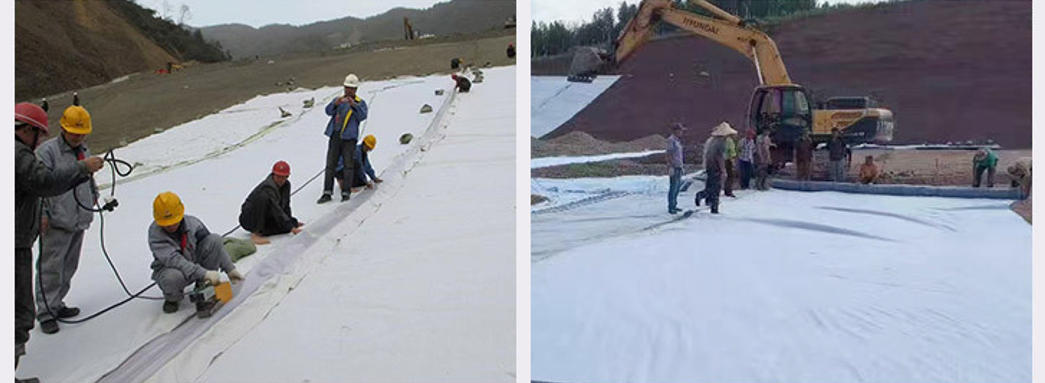
Email: obor@sdobor.com Tel: 0086-13205383163

Email: obor@sdobor.com Tel: 0086-13205383163
Composite Geomembrane Geotextile
Product Description
HDPE Geomembrane pond liner is a kind of smooth, high quality waterproof liner, which is made of specially formulated original polyethylene resin. This raw material is specially designed for flexible geomembrane applications. The pond liner plastic sheeting contains about 97.5% polyethylene, 2.5% carbon black and traces of antioxidants and heat stabilizers. It does not use other additives, fillers or extenders. The HDPE geomembrane pond liner plastic sheeting has excellent chemical resistance, mechanical properties, environmental stress crack resistance, dimensional stability and thermal aging characteristics. In addition, HDPE Geomembrane liner has puncture resistance and tear resistance that are unmatched by other geotechnical products on the market.

OBOR HDPE geomembrane landfill biogas digester artificial lake fish pond water composite geomembrane.
HDPE geomembrane is a kind of waterproof and barrier material produced by high density polyethylene as raw material (density of 0.94g/cm3 or above). HDPE geomembrane full name "high-density polyethylene membrane", has excellent resistance to environmental stress cracking performance, low temperature resistance, aging resistance, corrosion resistance, is widely used in domestic landfills, solid waste landfills, sewage treatment plants, artificial lakes, tailings treatment, fish ponds, aquaculture and other seepage control projects.

1. The slope shall be laid in order from top to bottom. Don't pull it too tight.
2. Tow adjacent longitudinal joints should not be in a horizontal line, should bestaggered more than 1m each other.
3. Longitudinal joints should be more than 1.50m away from the dam foot and bending foot, and should be located on the plane.
4. When the slope is laid, the direction of spreading film should be basically parallel to the slope line.
5. The construction, first of all to use small diameter sand or clay levelingbase, and then laid the geomembrane. The geomembrane should not be stretched too tight, and the part of the soil bured at both ends is corrugated. A transitional layer of about 10cm is laid on the geomembrane with sand or clay.




Contact: Sophy
Phone: 0086-13205383163
Tel: 0086-13205383163
Email: obor@sdobor.com
Add: Economic Development Zone, Taian City, Shandong Province, China
We chat